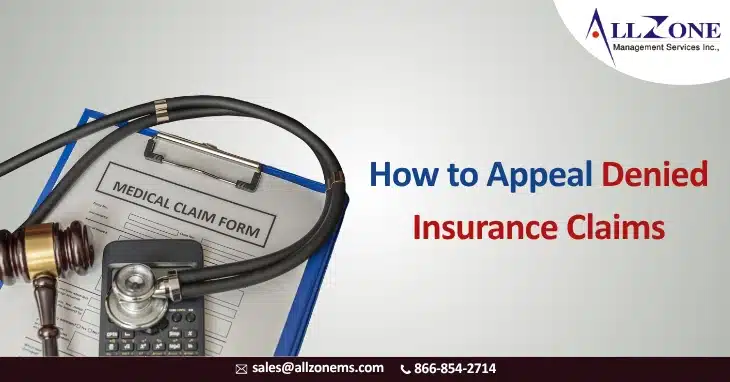Getting an appeal denied insurance claim can feel like hitting a brick wall, but it doesn’t mean your fight for coverage is over. Many denied claims are overturned on appeal. By understanding the process and being persistent, you can significantly increase your chances of getting the benefits you deserve. This comprehensive guide will walk you through each crucial step.
1. Decipher Your Denial: Understand Why and Know Your Rights
The first and most critical step is to understand exactly why your claim was denied. Your denial letter is your roadmap. Read it meticulously. Common reasons for denial include:
- Service not covered: The service or treatment may not be explicitly listed as a covered benefit in your policy.
- Pre-existing condition exclusion: Your policy might have clauses excluding coverage for conditions you had before enrolling. Make sure you fully understand these terms.
- Lack of medical necessity: The insurer might argue the service wasn’t medically necessary. This is where strong documentation from your doctor is crucial.
- Procedural errors: Mistakes in how the claim was submitted by your healthcare provider, such as incorrect codes or missing information, can lead to denial.
Simultaneously, know your appeal rights. If your appeal denied insurance claim, your insurance plan documents, often called the Summary Plan Description (SPD), will outline the appeals process. Most states and federal laws, like the Affordable Care Act (ACA), mandate specific appeal rights and timelines. Familiarize yourself with these to ensure you don’t miss any critical windows.
2. Connect with Your Insurer: Get the Specifics
Once you understand the denial, contact your insurance provider directly. Don’t hesitate to call their customer service department. Speak with a representative and clearly state that you intend to appeal the denial.
During this call, be prepared to ask pointed questions:
- What is the exact deadline for submitting an appeal?
- Are there specific forms I need to complete?
- What additional documentation do you require to support my appeal?
- What is the specific address or method for submitting the appeal? (e.g., online portal, mail, fax).
Keep meticulous records of every interaction, including the date, time, the representative’s name, and a summary of your conversation. This paper trail can be invaluable if further disputes arise.
3. Build Your Case: Gather Supporting Documents
A successful appeal hinges on presenting a strong, well-documented case. Think of yourself as building a legal brief. Here’s what you’ll likely need:
- Copy of the Denial Letter: This serves as the primary reference point for the appeals reviewer.
- Your Insurance Policy Documents: Highlight the sections of your policy that you believe demonstrate the service or treatment should be covered. This shows you’ve done your homework.
- Detailed Medical Records: Obtain all relevant medical records from your doctor or hospital related to the denied service. This includes diagnostic reports, test results, and treatment plans.
- Doctor’s Letter of Medical Necessity: This is often the most powerful piece of evidence. Ask your doctor to write a detailed letter explaining why the service or treatment was medically necessary for your condition. The letter should be clear, comprehensive, and use medical terminology. It should directly counter the insurer’s reasons for denial if they cited lack of necessity.
- Correspondence: Include copies of any previous communications with your insurance company regarding this claim.
4. Submit Your Formal Appeal: Timeliness is Key
Once you’ve compiled all your supporting documents, it’s time to submit your formal appeal. Adhere strictly to your insurer’s preferred submission method, whether it’s an online portal, mail, or fax.
Meeting deadlines is paramount. Missing an appeal deadline can be grounds for the insurer to automatically uphold their original denial, regardless of the merits of your case. Send your appeal via certified mail with a return receipt requested if mailing, or keep screenshots and confirmation numbers if submitting online, to prove timely delivery.
5. Pursue External Review: An Independent Assessment
If your initial internal appeal with the insurance company is unsuccessful, don’t despair. You may still have options. Depending on your specific plan and state regulations, you might be eligible for an external review.
If your appeal denied insurance claim through internal processes, an external review involves an independent third party reviewing your case. This review is conducted by an entity that has no financial interest in the outcome, offering an unbiased assessment of whether the insurer’s denial was appropriate based on your policy and medical necessity. This can be a particularly valuable avenue if you strongly believe the internal denial was unfair or incorrect. Your denial letter should provide information on how to request an external review, or you can contact your state’s Department of Insurance.
Beyond the Steps: Persistence and Resources
Throughout this entire process, persistence and professionalism are your greatest assets. Stay organized, keep detailed records, and don’t get discouraged by initial setbacks. Remember, you have rights, and there are resources available to help you. Allzone’s medical billing company can also be a valuable resource for understanding the complexities of denials and appealing them.
Consider reaching out to:
- Your State’s Department of Insurance: They can provide guidance on your rights, review processes, and even mediate disputes.
- Consumer Advocacy Groups: Organizations specializing in healthcare consumer rights can offer invaluable advice and support.
- Legal Counsel: For complex or high-stakes denials, consulting with an attorney specializing in insurance law might be a wise step.
By following these steps, staying informed, and advocating for yourself, you significantly increase your chances of overturning a denied insurance claim and getting the coverage you rightfully deserve.

